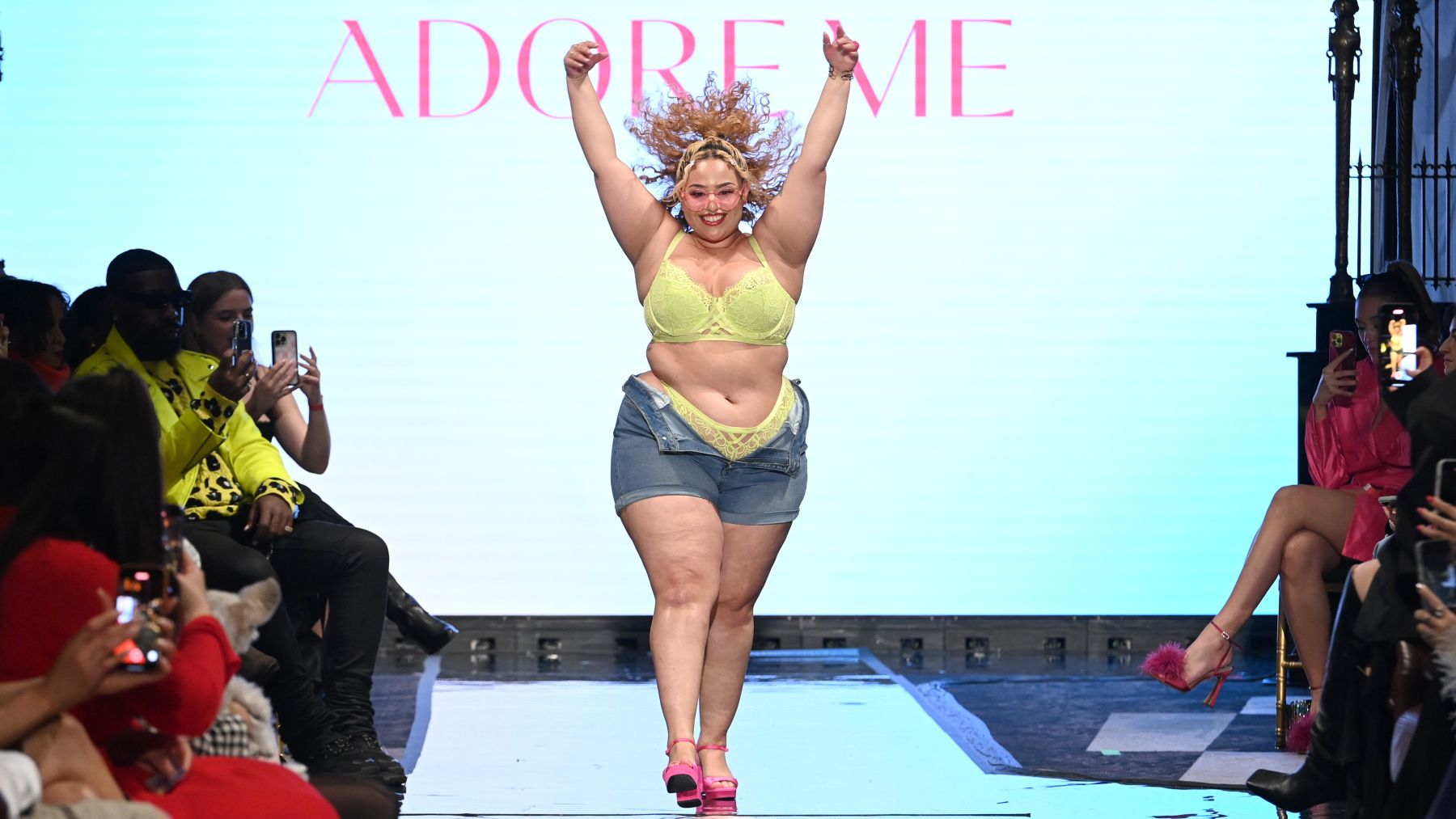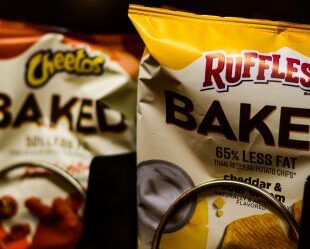
Adore Me may now be under the Victoria’s Secret umbrella, but its lingerie fashion show earlier this month was very different from the spectacles its corporate parent used to put on.
The 30-minute runway had scantily clad models in Valentine’s Day, Western bridal and Malibu Barbie Y2K-inspired lingerie, blowing kisses to a soundtrack of pop hits. But the similarities ended there.
The show, which was staged at Gotham Hall on Feb. 10 to coincide with New York Fashion Week, was broadcast on Adore Me’s website, not network television. It also featured a cast of models that had a wide variety of body shapes and sizes. In another modern touch, the show incorporated live selling, allowing those watching at home to shop the looks on the runway.
It was also done on a much smaller scale. Chloe Chanudet, Adore Me’s chief marketing officer, said the show’s budget equaled the cost of just one macro influencer’s social post. The audience included a mix of around 450 micro-influencers and Adore Me customers. With a lesser budget came lesser impact: The show generated less than $20,000 in earned media value over the weekend, according to data from influencer marketing platform Tribe Dynamics. Conversely, Rihanna’s intimates brand Savage x Fenty generated nearly $3 million in earned media value from its most recent fashion show in November 2022, Tribe Dynamics estimates. (Adore Me said that according to its own calculations, its show generated more than $800,000 in earned media value, based on Instagram posts that tagged the brand or used #adoreme around the event.)
The lingerie show is going through a metamorphosis. By the time the Victoria’s Secret fashion show, which attracted over 10 million viewers on broadcast television at its height, was cancelled for good in 2019, the format faced mounting criticism for its narrow definition of beauty and ratings in steep decline. Around the same time, a new generation of brands, including Adore Me and Savage x Fenty, which also carries extended sizing, were on the rise. They have adapted elements of the show formula, morphing the concept into a new form of fashion-centric entertainment that puts body positivity at the centre.
Savage x Fenty, which has been staging an annual show since 2019, has seen the media impact value around its show grow tenfold since then, according to data from Launchmetrics. But Adore Me’s underwhelming engagement of its first show post-acquisition proves there isn’t a single formula that can work for all brands.
For Adore Me, the aim was to both lure in new customers while keeping its existing client base excited with its consistent message of inclusivity. (Adore Me offers lingerie in 77 sizes, with bra cups spanning from A through I and bands in sizes 30-46.)
“We have not found a format that is driving new customer acquisition [for experiences like NYFW],” Chanudet told BoF. “We are definitely going to be measuring that for the fashion show.”
What Victoria’s Secret Got Right
The downfall of the Victoria’s Secret show spoke more to the retailer’s own failings than waning consumer demand for fashion content.
“The show wasn’t the problem. The content of the show was the problem,” said Conor Begley, chief strategy officer at influencer marketing software platform CreatorIQ.
In 2019, the same year Victoria’s Secret cancelled its annual showcase, Savage X Fenty first broadcast its own star studded affair on Amazon Prime. It turned the format on its head with inclusive casting, showcasing models and dancers of different sizes, ages, races and abilities. But the brand recreated some of the spectacle from Victoria’s Secret’s version, staging the show at Barclays Center in Brooklyn and including performances from Halsey and DJ Khaled.
“From a consumer perspective, it did feel like that was a new activation and event that wasn’t seen in a while,” said Calla Murphy, vice president of digital strategy and integrated marketing at Belardi Wong, a marketing strategy and creative services firm.
Still, the early results were small, especially compared with the reach Victoria’s Secret had. (Even in its final year, 2018, over 3 million people tuned in). Savage x Fenty generated $2.2 million worth of media impact value in its first broadcast year, according to Launchmetrics.
The brand continued to experiment with staging, and Savage x Fenty’s shows have become more conceptual. Subsequent broadcasts have elaborate sets, with Johnny Depp emerging from an on-stage forest in last November’s edition.
Viewers have welcomed the change. The brand earned nearly $22 million in media impact value during the first week of its latest show, titled Vol. 4, that aired in November 2022.
Adore Me, meanwhile, opted for a pared down concept, with velvet couches and chairs lined up to form a runway, a projector screen showcasing the brand’s name and a thumping soundtrack.
“Those brands with celebrity backing [have an advantage in] visibility and brand awareness,” Murphy said. “That is hard to replicate for e-commerce brands.”
What Audiences Want
While spectacle still drives high media engagement for lingerie shows, intimates brands are also applying a more commerce-centric approach to their presentations.
Adore Me’s introduction of the live shopping element, which the brand called “from the catwalk to the cart,” to its runway show on Feb. 10 saw three times more orders than the company’s average live shopping event in the past six months.
As well, changing attitudes have made inclusive casting a non-negotiable in the sector.
“The idea we tried to convey is you’re completely allowed to be fashionable in your own way,” Morgan Hermand, Adore Me’s founder and CEO told BoF. “And inclusivity is part of the core brand values.”
While lingerie brands are experimenting with the concept, not all companies are eager to turn it into a pop cultural touchpoint the way Victoria’s Secret did. Adore Me, after all, allocated a shoestring budget to the affair, despite its giant corporate parent. Some brands are accepting that the point may be to simply sell clothes, rather than engineer a culture-defining moment.
“I don’t think it’s about as much needing star power. It’s about needing authenticity [and] incredible products,” Belardi Wong’s Murphy said. “Just because there is a celeb doesn’t make you buy from a brand.”



